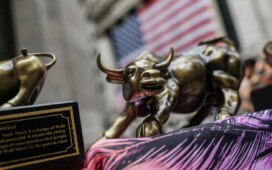David Gardner’s new book, “Rule Breaker Investing,” is full of excellent lessons for those navigating the stock market.
In his new book, Rule Breaker Investing, Motley Fool Co-Founder David Gardner lays out the strategy for stock picking that has been the foundation of his investing for nearly three decades. The investing approach described in this book has also formed the philosophy of The Motley Fool’s Rule Breakers investing service, which has handily beaten the S&P 500 since its inception.
The book outlines numerous habits, traits, and principles, but three nuggets of wisdom resonated with me especially. The Rule Breakers philosophy provides a concise yet powerful framework that has guided numerous investors to success.
Add up, don’t double down
One of the more famous sayings in investing is to “buy low and sell high.” Of course, buying a stock when it’s cheap and selling it when it’s expensive means you’ve made money — that’s simple enough. However, Rule Breakers habit No. 2 is “add up, don’t double down.”
David lays out a few reasons that adding to your winners works better than the traditional investing advice. First of all, it focuses on the buying and not on the selling. Put another way, Rule Breakers will “buy high and try not to sell.” When the emphasis is on buying great companies that have strong past price appreciation (Rule Breakers stock trait No. 9), you’re throwing “good money after good,” as Gardner puts it.
And rather than adding to losing stocks in an effort to get back to even, or doubling down, Rule Breakers add to their winners because they believe that winning stocks continue to win.
“Overvalued”
Anyone who has followed Rule Breakers or David Gardner knows that one of the six traits of a Rule Breakers stock is that it is considered overvalued by Wall Street. For anyone with even an ounce of value investor in them, this trait may seem contrarian at best and ridiculous at worst. Despite being aware of this trait for many years, I also find myself struggling with it at times.
However, when you peel back the layers, there’s an insight here that is often missed in the world of investing. Typically, when the valuation of stocks is discussed, it’s numerical. You might hear about the price-to-earnings ratio or the price-to-sales ratio as the defining metric for a stock’s valuation. Then, investors compare that multiple to those of the company’s peers or its historical levels, or they project this out to the future based on their expectations for the company’s performance.
But the traditional way of measuring valuation overlooks some of the intangible aspects of a business that contribute to its success. Gardner mentions brands, management, and a company’s culture as important “inputs” to a company’s success and posits that these drive the “outputs” of profits and cash flows. To put it succinctly, “There are no numbers for the things that matter most.”
Fair starting line
The book’s last part outlines the six principles of a Rule Breaker portfolio. After spending parts one and two focusing on the habits of a Rule Breaker investor and six traits of a Rule Breaker stock, the focus turns to portfolio construction. Among the wisdom in this last part of the book is the idea of giving your stocks a fair starting line.
When buying a stock for the first time, it’s natural to allocate more money to the companies you have high conviction in and less to those where there may be some uncertainty. Again, what seems intuitive is challenged by Rule Breakers as Gardner believes each stock should receive the same initial allocation.
The term “fair starting line” comes from Gardner’s love of the horse track, where the horses line up at the gate to ensure they all start at the same point. Gardner brings this analogy to portfolio construction and believes each stock deserves the same amount of starting capital, regardless of your belief in its future prospects.
To continue the horse racing analogy, Gardner suggests that you want a horse with 3-2 odds to start at the same point as one with 80-1 odds because you don’t know how things will turn out. It’s possible the long-odds stock becomes your big winner, and the favorite flames out and loses most of its value.
There’s one last piece to this principle that is vital to remember, and it relates to what is written above. Unlike horse racing, you can play through the whole race in the stock market. Despite the equal starting point, you can add to the stocks that are winning as the race progresses (add up, don’t double down), building a portfolio full of winners over decades of investing.


